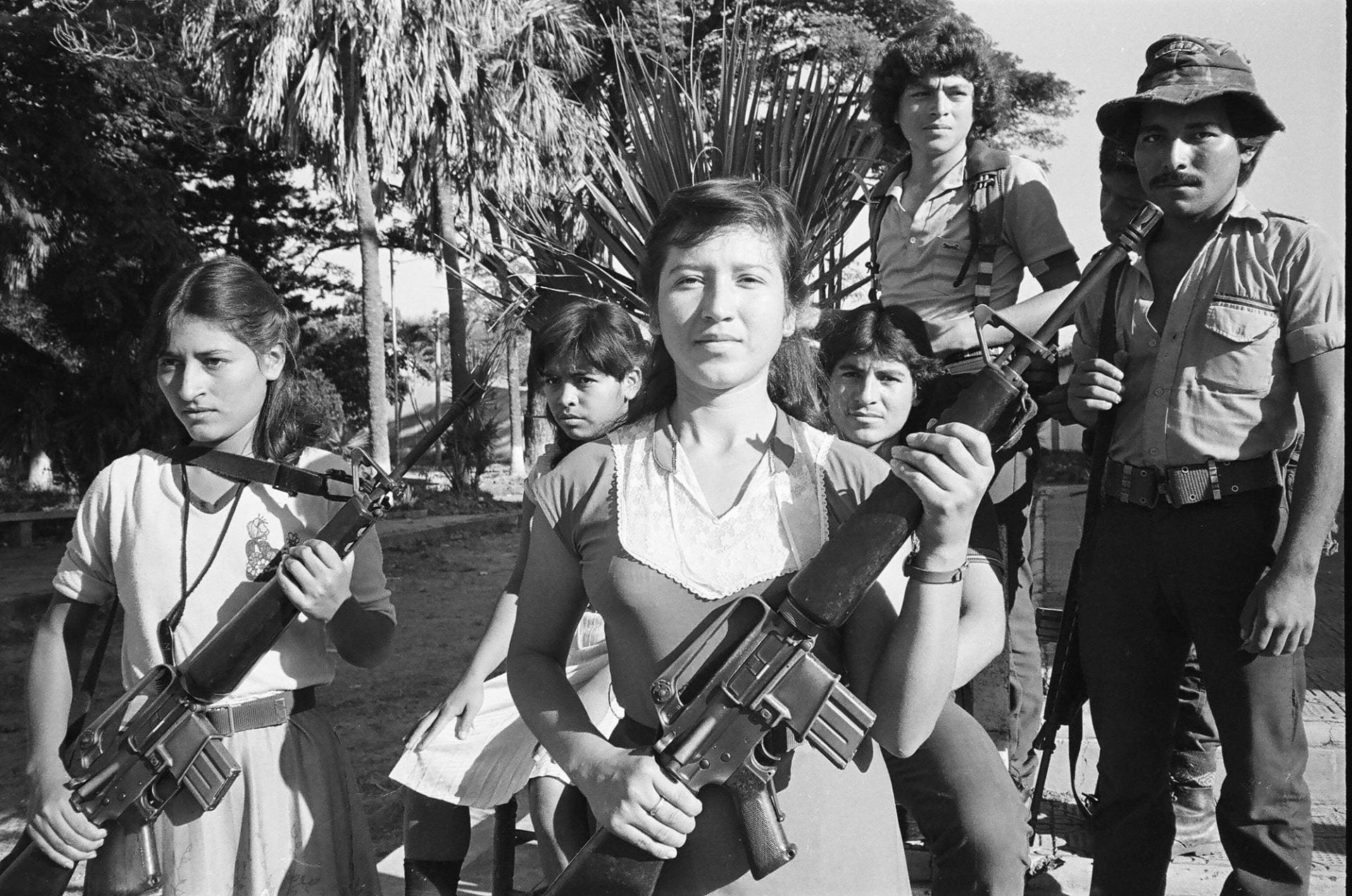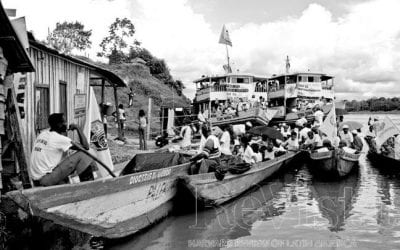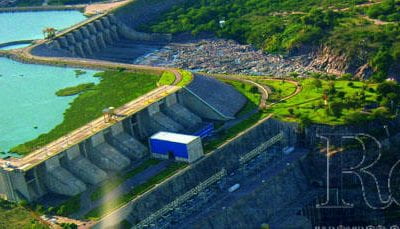A Review of Guatemala, la infinita historia de las resistencias
Reframing War and Local Conflict in Guatemala

Guatemala, la infinita historia de las resistencias, Edited by Manolo E. Vela Castañeda (Magna Terra editores, Guatemala).
Guatemala, la infinita historia de las resistencias
Edited by Manolo E. Vela Castañeda
Magna Terra Editores, Guatemala
The collection entitled Guatemala, la infinita historia de las resistencias, represents a turning point in our understanding of that country’s turbulent and ultimately tragic late 20th century. Its eleven chapters—with the exception of two on the city—are dedicated to the core of the conflict: the indigenous countryside. Compiled by Guatemalan sociologist Manolo E. Vela Castañeda, the book definitively shifts the spotlight away from elites, whether these are composed by leaders of revolutionary groups, political parties or the military, and onto the majority of Guatemalans in local wartime spaces that each have their own back-stories. This short review can only point out highlights of a book that needs to be widely read by Guatemalanists as well as by students of modern peasant and indigenous revolts.
Generated by an intellectual collective that represents a new generation of Guatemalan anthropologists, sociologists and historians—and without excluding the views of an older one or of two foreigners—Guatemala, la infinita historia de las resistencias both routs and transcends the repetitive narrative in much of the scholarship that has placed the indigenous population as marginal to, and/or “caught between two armies” during the armed conflict in the 1980s.
In a related move, it also mercifully replaces the notion of “the” Maya with one that emphasizes the historical, economic and regional complexities of different Maya pueblos that are informed by shifting distinctions of status and occupation, to show that there is no simple ‘yes,’ or ‘no’ to the question of indigenous adhesion to the revolutionary groups. The selections in the book illuminate how some women and men were leaders within the guerrilla groups; many collaborated with them; and others opposed them. Moreover, these stances could be ambiguous, and they were not necessarily stable in the fast-moving early 1980s. In addition, and based on the memories of residents and grassroots leaders and on persistent research into local and national archives, this edited volume goes beyond the “did they/didn’t they” conundrum to address the related, yet more far reaching and profound question of what was going on in rural communities, and in urban neighborhoods, that led to pre-insurrectional situations in the late 1970s.
Thus the book’s overall focus is specific to different departments and municipalities. Besides Morna MacLeod’s analysis of the 1980 declaration of Iximché, Ricardo Sáenz de Tejada’s discussion of the worker, student and neighborhood alliances that shaped the 1978 Guatemala City uprising, and Denise Phé-Funchal’s history of the relatives of the disappeared Grupo de Apoyo Mutual, Guatemala, la infinita historia de las resistencias includes chapters by Leticia González on the Ixil region; by ex-guerrilla commander Margarita Hurtado Paz y Paz on Huehuetenango; and by Cindy Forster on the Southern Coast and the massive strike of cane cutters there. Marta Gutiérrez paints a rich social history of the department of San Marcos. Glenda García y García delineates events and changing grassroots’ perspectives between 1976-1985 in the municipality of San Martín Jilotepeque, Chimaltenango, where people first organized and eventually—in their words—“surrendered” to the Guatemalan army as a survival tactic in the face of military encirclement. Pablo Ceto, Maya Ixil and ex-guerilla leader, reflects on his experiences in the indigenous highlands.
With ingenuity, Carlota McAllister relates how international and national Cold War politics and economics turned a marketplace in Chupol, in Quiché, into a site of insurgency where Maya women successfully opposed forced military recruitment; and Vela Castañeda’s own chapter is on the understudied department of Petén, the largest in the country and one central to peasant colonization, to the military generals’ rising economic clout in the 1970s, and to the war.
All these areas have had a long history—an infinita historia—of resistance that dates from at least the 19th century. In the countryside these resistencias exploded in the 1960s and 1970s around land tenure, extractive industries, hydroelectric projects, low wages, mistreatment, and local power. They intersected with new social organizations and experiences that included peasant leagues, the twists and turns of cooperatives and development projects, the radicalization of Catholic Action and the appearance of a new historical protagonist, educated Maya youth who grew up in this context and quickly turned into local leaders in religious groups, and in community projects formed around education, culture and healthcare.
Even though general left-wing discourses were certainly present in these post 1954 years, activism happened, expanded and started to burst its seams before armed guerrilla groups had critical presence in many parts of the country.
What happened after these arrived is very well-described by García y García as an “articulación de los conflictos.” It is an eye-opening formulation; chapter after chapter gives evidence of this articulation of conflicts. What does it suggest to learn that traditional Maya sacerdotes invited guerrilla members to present their views at a meeting in a ceremonial center in Huehuetenango? How do we interpret the fact that a Kaqchikel community in Chimaltenango sought out the revolutionary movements because it was looking for ways to further organize around its own demands?
What the material in Guatemala, la infinita historia de las resistencias implicitly argues is that perhaps we need to turn the question of indigenous incorporation into the groups such as El Ejército Guerrillero de los Pobres or La Organización del Pueblo en Armas on its head, and consider the propositionthat indigenous people were trying to incorporate the revolutionaries into their existing and ongoing local struggles, ones that were larger and more significant than guerrilla attacks on the army.
That would suggest that elite fears of the centuries’ old nightmare of “Indian Rebellion” were at the heart of the 1980s. The strategy of genocide might not have been exclusively about draining the sea so that the fish die, but about draining the sea to teach it unforgettable lessons about power.
Even though Guatemala, la infinita historia de las resistencias necessarily describes and marks the massacres, the collection is not dominated by “el peso de la muerte,” to use historian Marta Gutiérrez’s haunting phrase. As Vela Castañeda states in his introduction, this collection aims to “introducir por la puerta grande al pueblo, las masas, la multitud, el populacho, la chusma, como agentes históricos” that thoughtfully broke codes of domination and upon whom various elites have depended, whether as labor force, political base or soldier.
The stakes are high today for indigenous communities and all others that are defending their existence against mining and other megaprojects that wolf down people, territory and resources. The need to understand, honor and support el populacho remains as important as it always has been.
Deborah T. Levenson is an associate professor at Boston College. A co-author with Greg Grandin and Elizabeth Oglesby of The Guatemala Reader, History, Culture and Politics, her latest book is Adiós Niño: The Gangs of Guatemala City and the Politics of Death, forthcoming from Duke University Press, Spring 2013.
Related Articles
Al Son Del Río
English + Español
Wending our way down the Atrato River in Colombia’s Chocó region, we finally reach the town of Puné. It is a fickle June afternoon, one of those humid tropical afternoons when the sun and water alternate in sudden torrential rains. “The river is everything to us,” …
Water: The Last Word
A man was shot and killed in a dispute in June 2010 over a water connection in San Juan Cancuc, Chiapas, Mexico. A Zapatista settlement coexists, if uneasily, on the edge of the municipality. Residents of the nearby community of El Pozo had threatened to shut off Zapatistas water connection. A confrontation ensued, shots followed, with one fatality and nine wounded. …
Water, The Energy Sector and Climate Change in Brazil
As a Brazilian, I am very proud of the rich natural resources of my country, in particular water resources. As an engineer who had worked in the Brazilian energy sector for the last fourteen years, I am very proud of the infrastructure built over the last seventy years that has allowed the use of water resources responsibly and intelligently. But as a hydrologist and doctoral student in water resources,…





